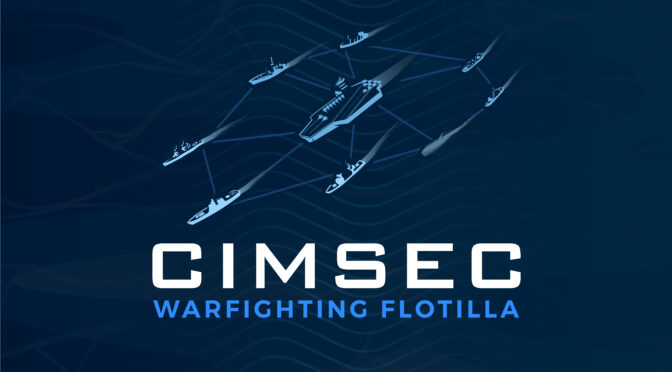By Dmitry Filipoff
This month the CIMSEC Warfighting Flotilla will be discussing current events, including the Russia-Ukraine conflict, as well as the latest developments in naval force development.
Down below is a look at the invites for our upcoming March discussions. We will be holding sessions on the Russia-Ukraine war, the Navy’s first F-35C deployment, and the standup of the first Marine Littoral Regiment. If you haven’t already, sign up through the form below to become a Flotilla member and receive the invites to our upcoming off-the-record March sessions.
Last month the CIMSEC Warfighting Flotilla held sessions focused on the naval dimensions of the Russia-Ukraine crisis, Navy cyber effectiveness, and balancing short-term demands with overall combat readiness. These forthright conversations addressed critical opportunities and shortfalls, and helped connect like-minded individuals focused on advancing naval force development and warfighting readiness.
Feel free to visit the Flotilla homepage to learn more about this community, its activities, and what drives it.
____________________________________________
Russia-Ukraine War
Major conflict has broken out between Russia and Ukraine. Russia is receiving broad international condemnation and punishment while embattled Ukraine is earning widespread support. How may this conflict play out over the coming weeks and months? How could NATO respond and reinforce itself? Join us to discuss the many dimensions of this new major European conflict.
Read Ahead: Michael Kofman thread on Russian military effectiveness so far.
____________________________________________
Navy’s First F-35C Deployment
The Navy just completed its first ever deployment of the F-35C onboard the USS Carl Vinson. With this new aircraft comes an opportunity to reform the carrier air wing, including with respect to tactics, composition, and concepts of operation. How can the Navy make the most of the F-35C and adapt the air wing of the future to field this new platform? What challenges may the Navy face in transitioning much of naval aviation to the F-35? Join us to discuss these questions and more as we consider the Navy’s fielding of this fifth-generation aircraft.
Read Aheads: “Three takeaways from the US Navy’s first F-35C deployment,” by Megan Eckstein
“What it is Like to Fly an F-35: Interviews with Three F-35 Pilots,” by Kris Osborn
____________________________________________
Standing Up the First Marine Littoral Regiment
The Marine Corps is ushering in a wave of reform to make itself more capable in great power competition. Among these reforms is a new formation — the Marine Littoral Regiment. MLRs will be a centerpiece of the new EABO and DMO warfighting concepts, and are intended to employ a variety of novel capabilities and tactics. How could the Marines make full use of the MLRs and fully implement the new formation? What challenges must be managed in transforming Marine units into these new littoral regiments? Join us to discuss these questions and more as we consider the implementation of Marine Littoral Regiments.
Read Ahead: “Standup of Marine littoral regiment will usher new gear into Pacific theater,” by Megan Eckstein
____________________________________________
Completed February Sessions
Russia’s Black Sea Fleet and The Role of Naval Power in the Russia-Ukraine Crisis
The Russia-Ukraine crisis is brewing with more than 100,000 Russian troops alongside Ukraine’s borders and 140 Russian Navy vessels engaged in exercises. In the event of a significant Russian incursion, how could Russia’s Black Sea Fleet be brought to bear? What operations could be conducted and toward what objectives? Join us to discuss these questions and more as we contemplate the naval dimensions of this major crisis.
Read Ahead: “How Russia’s Black Sea Fleet Could Change the Equation in Ukraine,” by Dr Sidharth Kaushal and Sam Cranny-Evans
____________________________________________
Navy Cryptologic and Cyber Warfare Effectiveness
Cyber warfare has long been heralded by Navy and DoD leaders as a critical force multiplier and major arena of competition. But is the Navy well-structured to seize the opportunity of cyber, or effectively defend itself from threats emanating from this domain? To what extent does the Navy’s cryptologic and cyber communities have the resident expertise, training, and integration to be effective? Join us to discuss these questions and more as we consider the Navy’s cyber effectiveness.
Read Ahead: “Navy Cryptologic Warfare Officers Cannot Do Cyber,” by LCDR Derek Bernsen, USNR
____________________________________________
Going from Short Term “Can-Do” to “Combat Ready”
The Navy has long operated under a “can-do” logic that sought to maximize the availability of the fleet for operational tasking. But after operating under such logic for decades, many fundamentals of combat readiness have atrophied. How can the Navy restore more balance to the relationship between its availability and readiness? What practices have been corroded by can-do culture, and what opportunities could be seized with a culture change? Join us to discuss these questions and more as we consider the effects of “can-do” culture on the Navy’s combat readiness.
Read Ahead: “Change Can-do to Combat Ready,” by LCDR Aaron Marchant, USN
____________________________________________
Dmitry Filipoff is CIMSEC’s Director of Online Content and Community Manager of the Warfighting Flotilla. Contact him at Content@cimsec.org.

